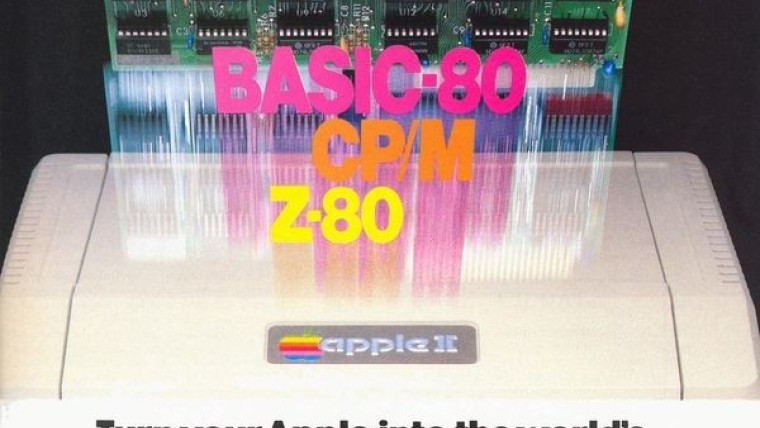When Microsoft first launched Windows 8 in 2012, it also launched the Microsoft Surface with Windows RT. Many people believed at the time it was the company's first venture into making PC hardware.
Oh, sure, the company had created and sold PC accessories like its many mouse and keyboard products, and it also was in the game console hardware business with its Xbox division. Some analysts believed at the time that it was a mistake for Microsoft to enter the PC hardware world. They thought other PC makers would turn on Microsoft, which until then had only released software for their systems.

However, many people at the time didn't realize was that Microsoft had actually sold a PC hardware product, well before it launched Windows, and even before it released MS-DOS. Then Microsoft CEO Steve Ballmer actually mentioned this fact at the first Surface press event in June 2012.
It was called the Z80 SoftCard, and it was first released 43 years ago this month, on April 2, 1980. In an even more ironic twist, the product was made as an add-in card for the Apple II PC.

The card launched not too long after Microsoft moved its headquarters from its original offices in Albuquerque, New Mexico to Bellevue, Washington. According to a Computerworld issue from October 1980, the initial idea for the Z80 SoftCard came from Microsoft co-founder Paul Allen. The card used the Zilog Z80 8-bit processor, which was actually created several years before in 1976. It had a clock speed of 2.041 MHz, according to Nicole Express. The card itself had no RAM onboard.
While the Apple II PC was popular, it couldn't run a lot of business programs that many people wanted to use on Apple's machine. Those programs were not compatible with its processor. The Zilog Z80 was compatible with programs that ran on Intel 8080 CPUs. Allen believed that an add-in card for the Apple II would allow Microsoft BASIC to run on Apple's machine. The Z80 SoftCard could also run the CP/M operating system, which allowed many more programs to be used on the Apple II.

The initial price for the Z80 SoftCard was $349 when it launched. To the company's surprise, it was a huge sales hit and at one point generated half of Microsoft's total annual revenue. The company later made a RAM card for the Z80 SoftCard (yes, an add-on for an add-on) that put in 16KB of RAM. Microsoft later made a version of the add-on card for the Apple IIe, which had 64 KB of RAM onboard and it did the same for the Apple III, It also inspired other companies to make their own add-in cards for Apple PCs.

One of the reasons for the Z80 SoftCard's initial success is that, because it could run CP/M programs, it could also run WordStar. WordStar was the word-processing software giant in the early 1980s. Having the card on the Apple II allowed lots of people to use WordStar that could not do so before. Indeed, some users also bought a second add-on card, the Apple 80-Column Text Card, that allowed the PC to show 80 columns of text instead of the Apple II's original 40 text columns.
(Fun fact: Game of Thrones' original creator George R.R. Martin still uses a DOS version of WordStar to write his novels and stories.)
Microsoft went on to make add-on cards and products for IBM-compatible PCs (Maybe we will write a separate article about those devices someday). However, the era of Microsoft's first foray into PC hardware products was fairly short-lived, The company's final PC add-on cards were released in 1988.
By that time, Microsoft decided to concentrate on its software products like Windows and, a couple of years later, the first version of Office. It did of course make input hardware accessories like mice, keyboards, and joysticks. However, we would have to wait over 20 years before the company returned with a full-fledged PC product.
















9 Comments - Add comment